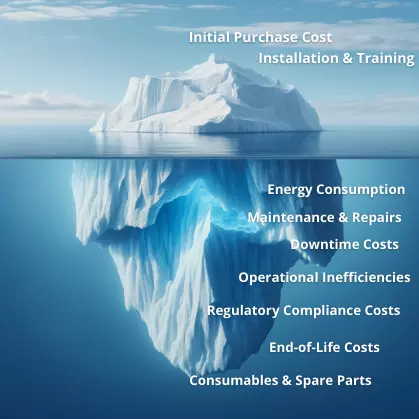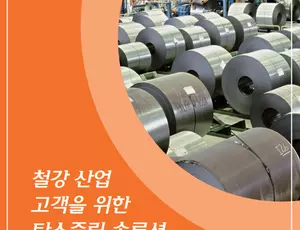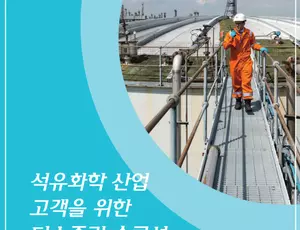Total Cost of Ownership (TCO): The Hidden Costs of Industrial Equipment
Did you know that energy costs account for nearly 32% of an equipment’s total lifetime expenses,
and that aging industrial machines cause 34% of unexpected failures in South Korea?
These hidden costs add up quickly, making equipment management a crucial financial decision for businesses.
For many businesses, the decision to invest in new equipment is often driven by the upfront purchase cost. However, what if that is only the tip of the iceberg? The Total Cost of Ownership (TCO) is a crucial factor that determines the real financial impact of an asset over its entire lifecycle.
In industries where energy prices are rising rapidly (+60% in South Korea since 2022) and where strict efficiency regulations are being enforced, choosing between renewing an asset or optimizing its usage can significantly affect operational expenses, carbon footprint, and long-term profitability.
This article explores how businesses can make data-driven decisions by evaluating TCO and weighing the benefits of replacement vs. optimization strategies. By the end, you’ll have a clear framework to determine the best financial and operational approach for your equipment investments.

What Is the Total Cost of Ownership (TCO) and Why Does It Matter for Industrial Equipment?
What is TCO and Why is it Important?
Total Cost of Ownership (TCO) refers to the full cost incurred throughout an equipment’s lifecycle, beyond just its purchase price. Breaking down TCO helps businesses understand where their money goes and identify potential cost-saving opportunities.
Key Components of TCO:
- Initial Purchase Cost: Acquisition, installation, training.
- Operating Costs: Energy consumption, consumables, compliance with regulations.
- Maintenance & Repair: Routine servicing, unexpected breakdowns.
- Downtime Costs: Lost production and inefficiencies due to unexpected failures.
- End-of-Life Costs: Decommissioning, disposal, or recycling fees.
The Hidden Costs of Equipment Ownership
Many companies underestimate the long-term costs of keeping an aging or inefficient asset in operation.
- According to multiple industry analyses (DOE, Siemens, ABB) the initial purchase cost typically represents only around 10% of the Total Cost of Ownership (TCO), while energy (~32%) and maintenance (~20%) often account for the majority of lifecycle expenses.
- In South Korea, aging industrial equipment is responsible for 34% of unexpected failures, leading to increased downtime and loss of productivity.
Given these figures, focusing solely on upfront costs without analyzing long-term expenses can lead to poor financial decisions. The next sections will explore when businesses should opt for new equipment and when optimization strategies are a smarter move.

When to Replace Industrial Equipment? Cost Considerations and Replacement Indicators
Key Indicators for Equipment Replacement
There are certain conditions where replacing old equipment is the best choice:
- Energy Inefficiency: Older models consume significantly more power. (Example: Replacing inefficient motors with high-efficiency models compliant with the IE3 energy performance standards can save up to 30% in energy costs.)
- High Maintenance Costs: If yearly maintenance costs exceed a set percentage of the equipment’s value, renewal is financially viable.
- Frequent Downtime: If breakdowns lead to repeated production halts, impacting business performance.
- Compliance Risks: New efficiency standards (e.g., South Korea’s 2025 Zero Energy Building regulations) may require upgrades.
Industries That Benefit Most from Replacement
- Manufacturing: High energy-consuming machinery, compressors, and outdated conveyor systems.
- Data Centers: Old HVAC systems leading to excessive cooling costs
Regulatory Influence on Equipment Renewal
- South Korea mandates IE3+ motors and high-efficiency industrial equipment for compliance.
- Government incentives: Tax benefits and grants for businesses adopting energy-efficient systems.
Optimize vs. Replace: The Smartest Way to Reduce Industrial Equipment Costs
Optimizing Existing Equipment Can Be the Better Option When:
- The equipment’s structural integrity is still solid, but efficiency is declining.
- Advanced maintenance solutions (predictive maintenance, remote monitoring) can extend its lifespan.
- The ROI(Return on Investment) on replacement is uncertain, and incremental upgrades provide a better cost-benefit ratio.
Optimization Strategies for Cost Savings
- Predictive Maintenance: AI-driven monitoring reduces maintenance costs by 12% and extends lifespan by 20%.
- Energy Monitoring Systems (e.g., Veolia’s Hubgrade™): Tracks real-time energy use and optimizes performance.
Keep, Replace, or Optimize? How to Cut Equipment Costs Effectively
| Criteria | Keep Old Equipment | Remplace Equipment | Optimize Equipment |
|---|---|---|---|
| Initial Investment | Low | High | Low to Moderate |
| Energy Efficiency | Poor (↑ consumption, ↑ costs) | High (↓ consumption 30%) | Medium (improvements possible) |
| Maintenance Costs | High (frequent breakdowns) | Low (warranty, modern tech) | Reduced with proactive monitoring |
| Downtime Risk | High (unexpected failures) | Low | Managed with predictive maintenance |
| Compliance Risks | High (may not meet future regulations) | Low (new standards-ready) | Can be adjusted to meet standards |
| ROI Timeline | Negative (costs increase over time) | Long-term (5-10 years) | Short to mid-term (1-3 years) |
Factors to Consider When Deciding
- Conduct a 5-10 year ROI analysis.
- Evaluate the impact of government incentives and upcoming regulations.
- Consider long-term operational efficiency vs. short-term financial constraints.
Veolia’s Solutions to Reduce Total Cost of Ownership (TCO) in Industry
Veolia’s Solutions for TCO Reduction
Hubgrade™ Smart Monitoring:
Real-time tracking to minimize energy waste.
Performance-Based Contracts:
Guaranteed energy savings for industrial clients.
Real-World Applications in South Korea
Industrial clients leveraging Veolia’s energy management solutions have reported up to 15% reduction in operational costs.
Key Takeaways
- Analyzing TCO helps businesses make smarter financial decisions.
- Optimizing existing equipment can extend lifespan & reduce costs, but replacement may be needed in specific cases.
- Government incentives and regulations should guide decision-making.



